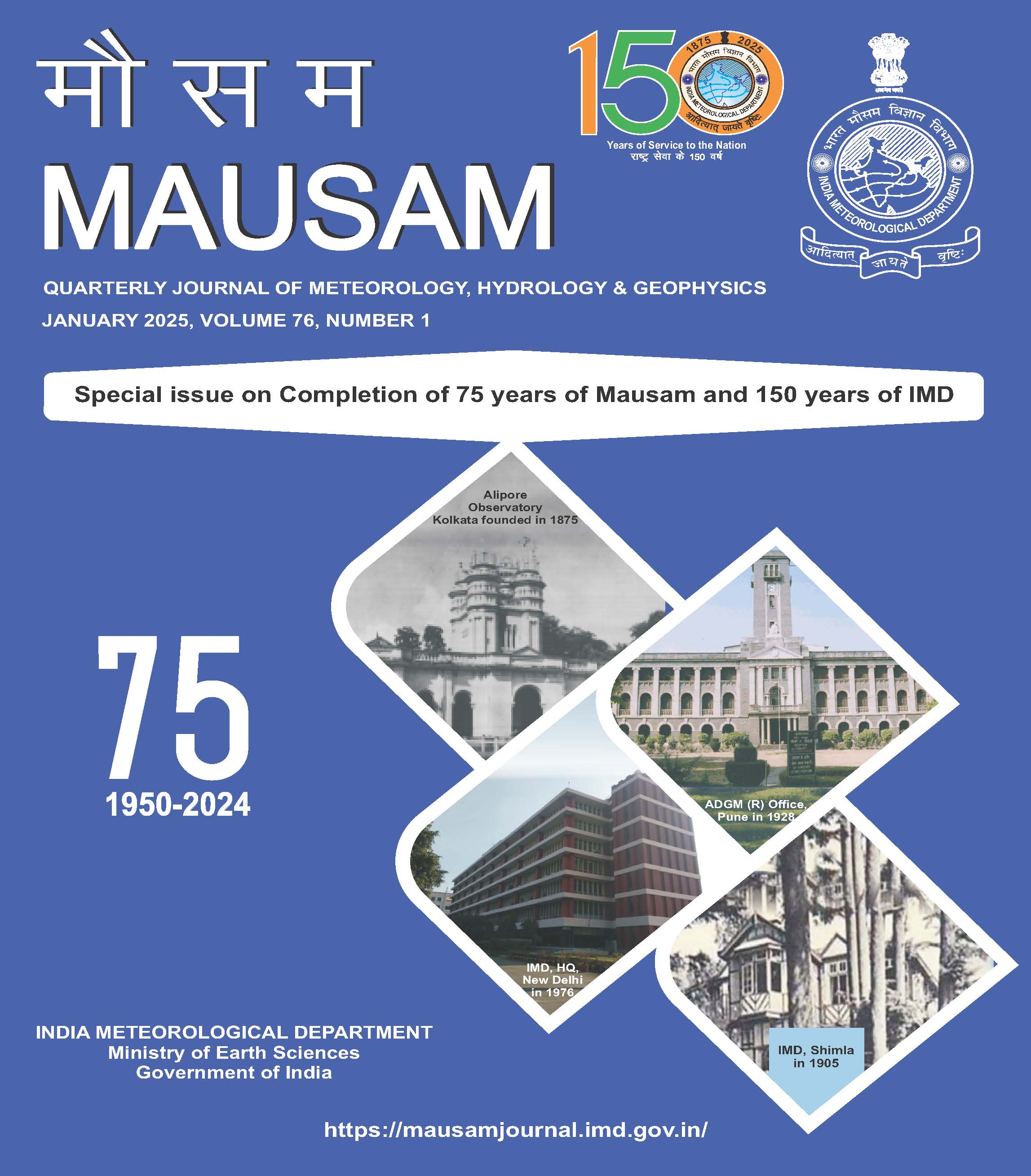Evolution of Cyclone Monitoring and Forecasting System in India: A review
DOI:
https://doi.org/10.54302/mausam.v76i1.6940Abstract
Two severe cyclonic storms hit the east coast of India in quick succession causing enormous loss of human lives and property – the first one struck Kolkata in October and the second one struck Machilipatnam in November, 1864. Concerned with these disasters, the Government appointed a committee in 1865 to formulate a scheme to develop a cyclone warning system, especially for Kolkata part to begin with. Since then, the India Meteorological Department (IMD) moved ahead in a very systematic manner in different stages to address all components of early warning system (EWS) including enhancement of observational network, development of infrastructure & organizational set up, communication system, modeling, monitoring & prediction of tropical cyclones (TCs), introduction & implementation of new technology for monitoring, forecasting and warning services along with continuous upgradation of standard operating procedure. As an outcome, the IMD could achieve zero death in Gujarat state during TC Biparjoy (June 2023) and less than 100 deaths due to any TC not only in India but also in the 13 countries bordering the Bay of Bengal (BoB) and the Arabian Sea (AS) in last decade. All these have resulted in overall improvements in socio-economic conditions in the region and also earned name & fame not only to IMD but also to India. This manuscript provides an insight into various phases in the development of Cyclone Warning System in India.
Downloads
Published
How to Cite
Issue
Section
License
Copyright (c) 2025 MAUSAM

This work is licensed under a Creative Commons Attribution-NonCommercial 4.0 International License.
All articles published by MAUSAM are licensed under the Creative Commons Attribution 4.0 International License. This permits anyone.
Anyone is free:
- To Share - to copy, distribute and transmit the work
- To Remix - to adapt the work.
Under the following conditions:
- Share - copy and redistribute the material in any medium or format
- Adapt - remix, transform, and build upon the material for any purpose, even
commercially.



